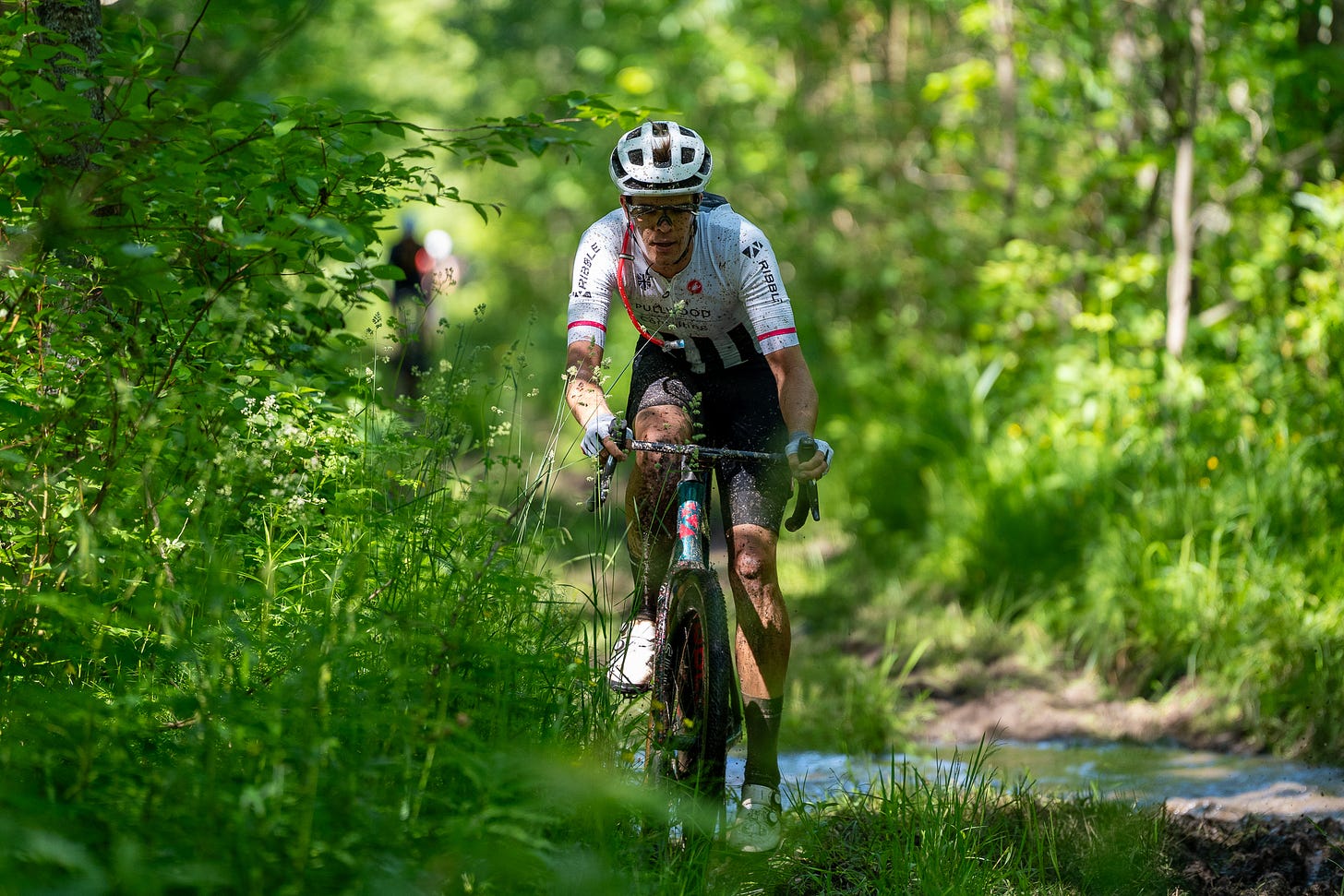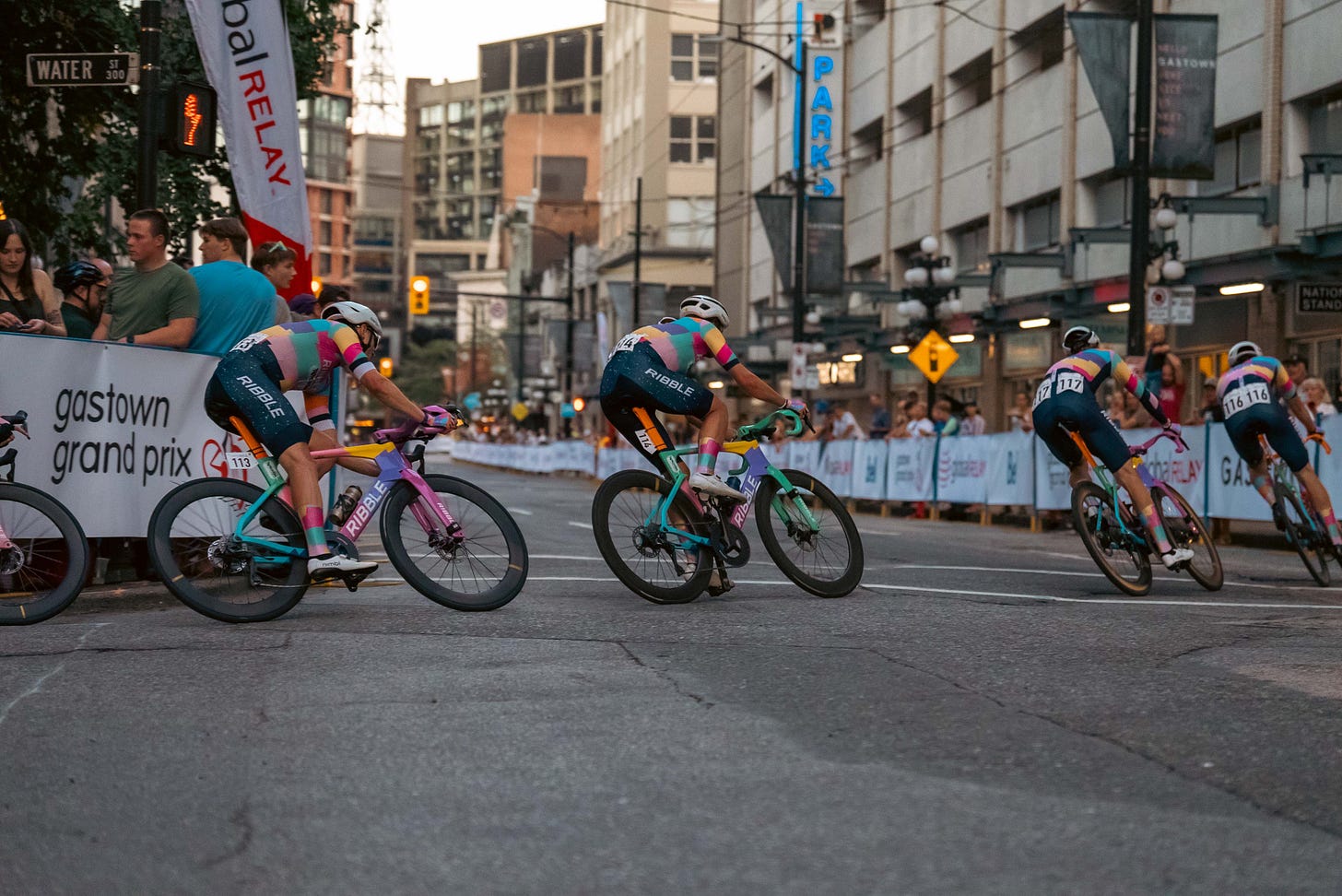Are Pro Gravel Teams Coming?
Surely it’s not if, but when?
Pro gravel teams are an inevitability, right?
The level is getting higher, the sport is getting faster and with that, money is rushing in. It’s easy to forget that the professional side of gravel racing is at most, only five years old.
With the sport professionalising at a rapid rate, it raises the question as to what happens next. The sport can go in so many different directions, and it’d be naive of us to think that it will look the same in five years time.
–
The Current Situation
There is a Europe vs. N.America divide.
On the US side, most riders run a privateer set-up. This means you’re in control of your budget, race calendar, sponsors and so on. Whereas in Europe, the traditional team mentality comes to the forefront What happens in these teams is a bit grey. Some pay, some don’t. Some cover expenses and some don’t. Some make you cover a set calendar, some don’t.
At the time of writing, there isn’t a single standout gravel pro team.
Collective vs. Team
What’s the difference between a Collective and a Team?
The lines are blurred, and for different brands, the terms mean different things. Usually, a collective is when a group of athletes have one consistent sponsor, but they are still privateers.
For example, on the Ribble Collective, we all ride Ribble bikes. However, we run separate calendars, and all of our other partners are individual. From a financial perspective, athletes are given $X as a retainer, but they are responsible for all of their own expenses and costs.
A team, such as the Ridley-Classified set-up, runs more like a traditional road set-up. The riders are paid a set monthly salary, and there are staff members to book logistics. To the best of my knowledge, all expenses are covered too.
There are a few blurred set-ups. Let’s take the newly formed Trek Driftless. This looks like a Collective as their riders run different calendars and have different sponsors away from Trek BUT they have a staff member and it seems that Trek covers a lot of their expenses too.
Confusing, I know.
Who’ll Blink First?
Specialized is the obvious choice.
It makes sense from a geographical perspective, they have one of the biggest marketing budgets too. They’re already close with Matt Beers, Sofia Gomez Villafane and Howard Grotts. They also sponsor a lot of individual athletes: Ian Boswell, Lance Haidet, Gee Schreurs (via SD Worx), Sarah Sturm, they could reasonably pull all of this together to create a full-blown team.
“Wait, didn’t Sarah Sturm lead out Gee at Unbound even though they’re not on the same team?”, I hear you cry. Well, yes. Maybe. Kind of. It’s complicated.
I imagine if Specialized launched a full blown gravel team then the Canyon Collective would follow suit.
The Difficulties?
Money
It’s no secret that the professional cycling model is flawed. It requires brands to put in substantial amounts of money, and often get little return. If we’re talking about a pro gravel team that would truly disrupt the gravel scene, it could cost as much as a million dollars.
I’ve got a little background in setting up teams recently, namely Ribble Rebellion. While Rebellion’s budget is no way near the figure I just quoted, the reason it works is because we signed the best riders for the job.
To make a splash in gravel, you have to have at least one of the top Lifetime Grand Prix riders. What’s the cost of signing a podium-guaranteed athlete? Quite high. Multiply that by however many riders you want, add in all of the expenses, and a couple of staff members then all of a sudden the budget is getting close to seven figures.
The best way of setting up a team would be using a brand that already has a solid foundation. Take that previous example of Specialized or Canyon. The big brands could hypothetically bring in riders from all over their ecosystems.
Imagine a team which brought together Specialized Factory Racing, Quickstep, SD-Worx and Bora-Hansgrohe. You could have the Cape Epic, Flanders, Roubaix, and Tour winner all on one team.
But then again, that wouldn’t be a gravel team, more a Collective of different teams.
Yeah, I’m still confused too.
Tactics
How many riders would you need to make a difference? At the world’s biggest race, Unbound, you have to accept that a percentage of riders are going to suffer mechanicals or incidents. It’s a 9 hr+ race which offers plenty of opportunities for something to go wrong.
To make a true difference in the final, you’d need eight or nine riders on the start line. That way, even when a few suffer mishaps, you still have enough numbers in the final. This would be hard to justify though, who’s signing that many riders?
Bahrain-Victorious arguably had the three strongest riders in the race at Unbound. They were dedicated to working together for the team cause, yet all three of them DNF’d. Gravel baby.
The Benefits
There is so much strength in pro-gravel, that I don’t think it’d be as hard to pull together a team as it first looks. For the guys towards the bottom half of the Lifetime Grand Prix, financially it’s hard work.
If you offered a strong, consistent rider the opportunity to be on a team, even if it meant a ‘domestique’ roll for a top guy, I think most would take it. There’s already a perfect example of this: Tobin Ortenbald is effectively Keegan Swenson’s right-hand man in the Santa-Cruz htSQD.
I think the main benefit for a rider would be lowered stress levels. Joining a team would mean that, versus a privateer set-up, you’re hands-off with all the logistical stuff. You know where your salary is coming from, you don’t have to worry about the logistics of getting to a race, or sorting out whatever mechanical problem the night before a race.
For the sponsor, you’d be able to streamline storytelling. It’s currently here, there and everywhere. The marketing rebound of the first team that comes in and wins big will be substantial.
Pas Normal Racing finished 2nd and 3rd at Unbound this year. To be perfectly honest, I don’t really know how their set-up works. I don’t know the financials, or what sort of model they go with. I do, however, know that whatever they’re doing is working.
What’s My Future?
At this moment in time, I want to stick to a privateer set-up. It puts me in control of my own life. It’s stressful and I have to find a pretty large chunk of money each year to run my calendar, I have to book all my travel, and my branding and activation. But, at the same time, that’s the beauty - it’s all mine.
I can see a situation at some point in the future where I’d want to set up a small team. Taking inspiration from Santa-Cruz’s htSQD, or Maxxis Factory Racing, it’d be three or so rider. If you did it well, it’d be super effective. But, like anything in life, it’d need the right people and an appropriate amount of resources.
If gravel goes in the same way as the road and teams become the norm, would I be against it? No, I wouldn’t. I’ve had so much change in the last 18 months of my life, that I’ll never rule anything out. If the correct set-up came along which still allowed me freedom, I’d be open to conversations.
Conclusion
While it’s unlikely that we are going to get to the point where team buses become the norm anytime soon, someone will bring a team to play.
What that means for the rider market remains to be seen. There are an awful lot of talented bike riders who aren’t racing at their full capability due to a lack of resources. Maybe they have to work part-time, or maybe they can’t do the same training camps as the big dogs who have plenty of cash.
I reckon we’re going to go the same way as MTB.
There’ll be multiple factory racing teams, each with a handful of riders. We’ll still see some privateers, but all the top talent will end up racing for a factory set-up in some way or another.
Project TAG, proudly partnering (both for my athletic and influencing ability) with…
While you’re here…
I’ve added a paid subscription and a ‘Buy Me A Coffee’ link to this post. As the year progresses, I’m planning on building this blog and putting out articles which I’ve always wanted to write but for whatever reason, haven’t wanted to pitch.
Any money that I make from either my Substack or BMaC link will go straight back into supporting my 2024 racing project. I am planning on keeping all content on here free to view though.



